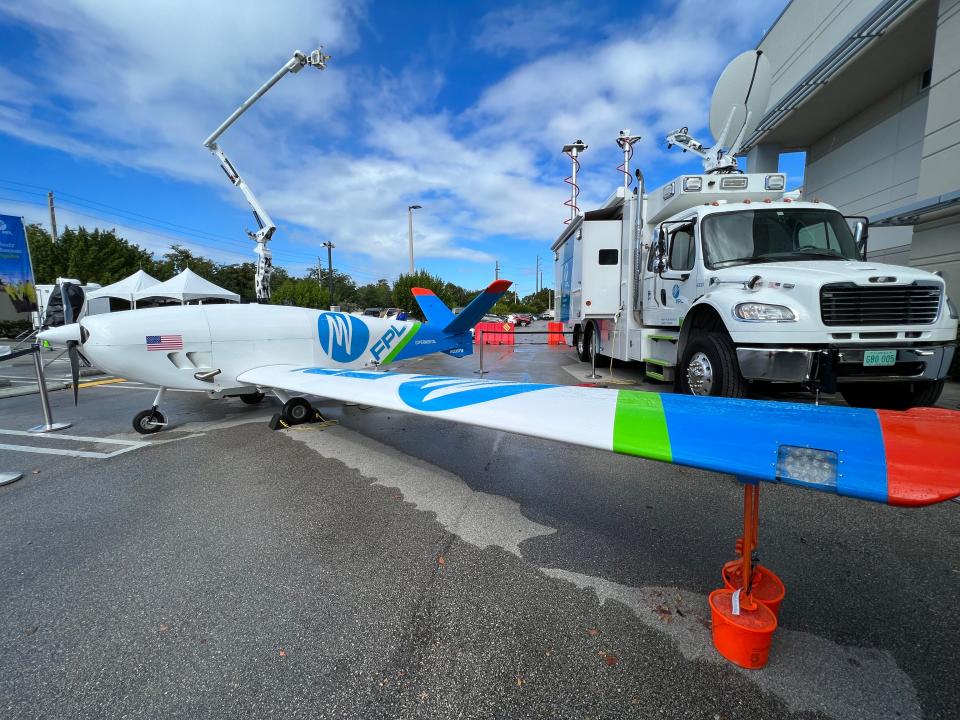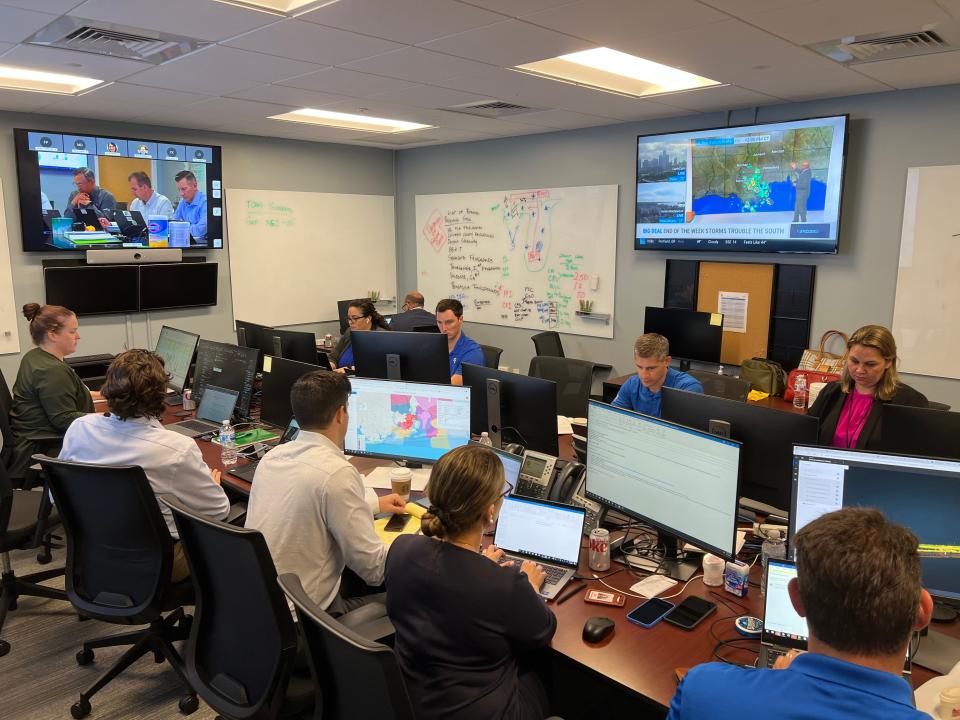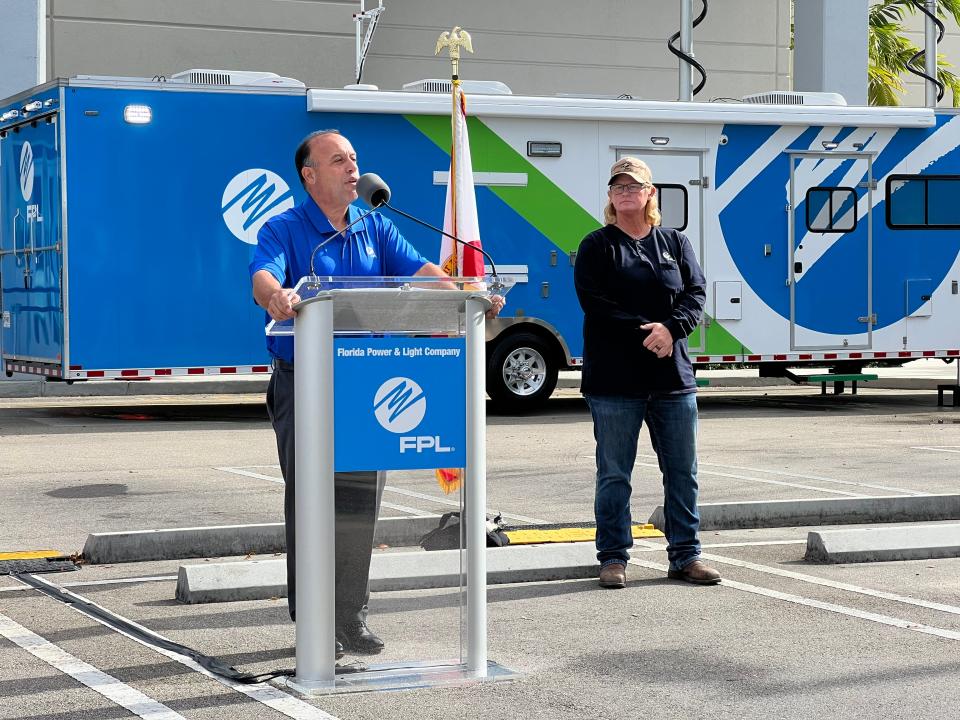How FPL's new $1.2 million fixed-wing hurricane drone will work and what it will do
RIVIERA BEACH — The newest tool in Florida Power & Light’s storm-ready kit has a wingspan slightly longer than a Cessna, can fly 1,000 miles at a time and cost the utility’s customers a cool $1.2 million.
This fixed-wing drone, called FPLAir One, will be used to survey storm damage across Florida, which the utility hopes will streamline restoration efforts to get power back on after an outage sooner.
Without this unmanned drone — which can weigh up to 1,800 pounds and sports the utility’s colorway of blue, green and orange — FPL crews would observe damage either in bucket trucks or by using small drones to get a bird's-eye view.
There are two drawbacks to those methods. First, this work can't be accomplished remotely; second, this surveillance can’t safely take place while the winds are more than 35 mph.
Hurricane season concerns: Hurricane season concerns: Influx of newcomers, COVID variants and supply chain issues
Natural gas prices: Will natural gas prices send FPL bills even higher? Not yet, utility says
“Because it (FPLAir One) can fly in tropical storm-force winds, we can get out sooner than we could before,” said Marshall Hastings, a FPL spokesman. Plus, FPL can send the drone across the state to understand what work needs to be done before sending a team in to make the necessary fixes.

After FPLAir One’s maiden voyage, set to take place in August, the aircraft will become the first large-scale drone to be flown for commercial use outside of Federal Aviation Administration test sites, the company said.
The drone was on display Thursday during the utility’s annual storm drill in Riviera Beach, along with other technological advances such as a remote-controlled tree trimming truck and an autonomous substation rover.
FPL employees practiced their response to a made-up Category 3 storm named Hurricane Constantine during this weeklong drill. In this scenario, the storm skirted the west coast of the state before making landfall in the Panhandle, modeled after the path of Hurricane Dennis in 2005.
Nearly 100 employees from a variety of departments such as vegetation management, customer service, information technology sat at computers or gathered at conference tables to sort out staging sites, customer outages and more. Twenty-four hours after the fictional storm hit, nearly 250,000 customers were without power, a figure displayed in big red numbers that all employees in the command center could see.

No two storms are the same. Manny Miranda can attest to that.
The vice president for power delivery has been with FPL for 40 years, and Hurricane Andrew still ranks as his worst. This August marks 30 years since the devastating storm, which made landfall on the peninsula near Homestead in Miami-Dade County.
More: Deadly Texas storm motivates Florida Power & Light to prepare for extreme winter weather
More: Why FPL's 'clean' power plants are ranked in report among top carbon producers
He recalled taking a helicopter flight over South Florida to assess the damage of the Category 5 storm. “As we’re getting closer, I’m thinking to myself, ‘This is bad. This is really bad,’” Miranda said.
Lineworker Heidi Killebrew can’t forget the memory of what she witnessed even three decades on.
“It was all pitch-black. There was absolutely nothing left. No poles. Everything was flattened,” Killebrew said. “Everybody was in shock and awe of the devastation.”

The restoration process was “tough,” with 16-hour days, seven days a week. But it was worth it to see residents cheer and cry when the power turned back on, she said.
“Every time I come to the FPL Command Center, and every day when I’m out in the field, I’m reminded of how far we’ve come,” Killebrew said.
FPL has made improvements to its grid since then, improving the speed at which customers can turn back on their lights after an outage, Miranda said. But “no system is hurricane-proof,” he said.
“A Cat 5 storm would cause significant devastation not only to the electrical infrastructure but to our communities,” Miranda said. “We’re going to see damaged homes, damaged businesses, so it will have a huge economic impact. But we would be much better prepared than we were during Hurricane Andrew.”
Hannah Morse covers consumer issues for The Palm Beach Post. Drop a line at hmorse@pbpost.com, call 561-820-4833 or follow her on Twitter @mannahhorse.
This article originally appeared on Palm Beach Post: Florida Power & Light to use unmanned drone to survey post-storm damage

